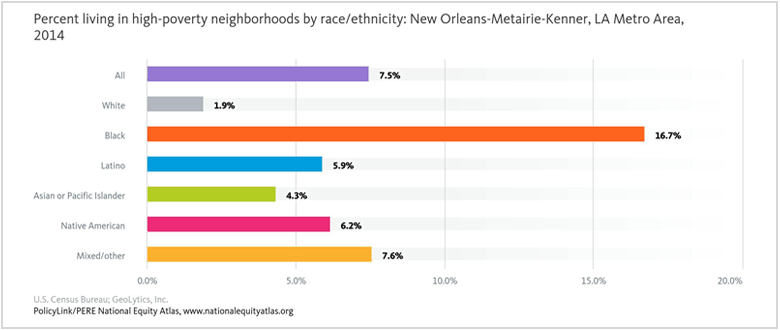An Overview of Governor Jerry Brown's Fiscal Year 2017-2018 Budget Proposal for California
On January 10, Governor Jerry Brown revealed his proposed budget for the 2017-2018 fiscal year, which projects a state budget deficit ($1.6 billion) for the first time since 2012. The $179.5 billion proposal maintains the state’s commitment to implementing the Local Control Funding Formula (LCFF), preserving the California Earned Income Tax Credit, and expanding healthcare access to vulnerable groups. Unfortunately, the budget proposal also recaptures nearly $1 billion in one-time expenditures provided in the Budget Act of 2016 (Budget Act) and delays spending increases for various programs and services, some of which, like LCFF, are designed to improve outcomes for low-income communities and communities of color.
We applaud the Administration’s continued commitment to important issues like healthcare access, LCFF implementation, and transportation, but believe more should be done through the budget to build an equitable California, one where all of the state’s residents can participate, prosper, and reach their full potential. We urge the Governor to work with communities, advocates, and the Legislature in the coming months to develop a budget that allows California to address its intensifying housing crisis, maintain health insurance for the newly insured, guarantee immigrants targeted for deportation have effective legal representation, and protect and invest in the state’s most vulnerable populations.
Below we highlight areas of the budget that are likely to be of interest to equity advocates, including health and human services, education, housing, transportation, public safety, and climate change.
Health and Human Services
The budget maintains current spending levels for programs that ensure California residents have access to quality, affordable health care and services. For example, the proposal provides funding for the Children’s Health Insurance Program, as well as the expansion of Medi-Cal coverage to undocumented children and individuals earning up to 138 percent of the federal poverty level. It also maintains funding for substance abuse programs and the transition of new immigrants from Medi-Cal to Covered California. In addition to continuing financial support for these services, the budget provides new funding to reflect the repeal of the Maximum Family Grant rule.
While we are encouraged by these aspects of the budget, we urge the state to continue investing in care coordination and integration programs for vulnerable residents, including the Coordinated Care Initiative, health care workforce initiatives, community infrastructure grants, and children’s mental health services grants.
Education
The education budget provides a small increase of $2.1 billion in Prop. 98 funding for K-14 education and proposes cost-of-living adjustments for LCFF funding targets, as well as for various programs funded outside of LCFF. Unfortunately, due to the projected revenue shortfall, the Governor’s proposal, while providing an additional $744 million for LCFF implementation, “maintains the implementation formula at the current-year level of 96 percent.”[1] Though we understand the new economic reality the state faces, we urge the Governor to fully implement LCFF as quickly as possible.
The budget also boosts investment in California’s Community College system. Notable areas of increased spending include efforts to address student disparities; the Guided Pathways program, an institution-wide approach to improving student completion rates; and school facilities energy efficiency projects financed through the Prop. 39 Clean Energy Job Creation Fund, which, in addition to improving energy efficiency on school campuses, targets training and jobs to individuals with barriers to employment.
Despite these positive investments in the community college system, the budget disappointingly proposes to phase out the Middle Class Scholarship Program, which provides has helped thousands of student to afford enrollment at CSU and UC campuses.
Housing
Even though the state faces a growing housing affordability crisis, the budget provides virtually no new funding for affordable housing. The proposal recaptures $400 million for affordable housing development included in the Budget Act, and conditions continued financial support for the Affordable Housing and Sustainable Communities Initiative (AHSC), a major source of state funding for affordable housing in recent years, on the extension of the cap-and-trade program by a two-thirds vote of the Legislature.
In the coming months, we urge the Administration to partner with the Legislature to allocate resources for AHSC without condition, provide meaningful new investments in affordable housing, and establish a permanent source of funding for the construction, preservation, and rehabilitation of affordable units.
Transportation Infrastructure
Although much of the transportation budget continues to focus funding on maintaining highways and roads in California, we are pleased to see an annual increase of $100 million for the state’s Active Transportation Program, which aims to improve the mobility, health, and safety of vulnerable residents by targeting walking and bicycling infrastructure in low-income communities.
To ensure our increased transportation spending achieves state equity and climate goals, funding should be targeted to grow investment in transit operations and complete streets, prioritize transportation projects that provide meaningful benefits to low-income people of color, and connect disadvantaged community residents to transportation sector training and jobs.
Public Safety and Justice
While the budget’s public safety proposal highlights many of the anticipated positive effects of Proposition 57[2], we hope the revised budget will deepen California’s commitment to investing in our people and communities, divesting from systems that separate families and perpetuate trauma, and eliminating policies that serve as barriers to the success of low-income people and people of color. These values are reflected in the budget’s proposal to end the use of driver’s license suspensions as a debt collection tool, a counterproductive practice that has caused financial insecurity throughout California’s low-income communities of color.
We hope the May Revision will build on the proposed repeal, by reducing funding for harmful institutions, including immigration detention centers, prisons, and law enforcement, and investing in reintegration services, quality legal representation for immigrants, and support for other vulnerable groups.
Climate Change and Natural Resources
The budget proposes a $2.2 billion dollar Cap-and-Trade Expenditure Plan using revenues generated through the State’s carbon trading program. This plan includes needed investments in transportation, housing, pollution reduction, and other programs that provide benefits to low-income, pollution-burdened communities. Unfortunately, the budget makes allocation of these proposed investments contingent upon the Legislature approving an extension of the state’s cap-and-trade program. Accomplishing this will require support of two-thirds of the Legislature and poses a significant hurdle to securing these important investments.
The Governor’s environmental and natural resources proposal also acknowledges the severe drinking water challenges faced by disadvantaged communities across California and commits to working with the Legislature and stakeholders to address these challenges. This commitment is very encouraging. However, with over one million Californians being served drinking water from systems that do not meet safe drinking water standards, we urge the Administration to take this commitment further and prioritize developing a sustainable funding source to ensure that all Californians have safe and affordable drinking water.
Conclusion
As we learn more about the incoming presidential administration’s policy goals, the Governor’s budget proposals are likely to change. In the coming months, advocates should engage their legislators and the Governor to ensure that hard fought gains for California’s low-income communities and communities of color are protected and expanded.
________________________________________
[1] Governor’s Budget Summary – 2017-18, “K-12 Education,” 20, http://www.ebudget.ca.gov/2017-18/pdf/BudgetSummary/K-12Education.pdf.
[2] Proposition 57 allows non-violent offenders who have completed the prison term for their primary offense to be considered for parole and authorizes the Department of Correction and Rehabilitation to establish a “credit” system under which individuals can earn an early release from prison. The law also provides that only judges may determine whether juveniles 14 and older can be prosecuted or sentenced as an adult.



